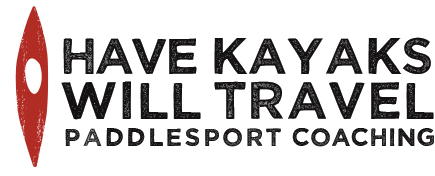Another perk of paddling: an international network of friends
Tom Motte, our Rhode Island connection. While we were in Maine, we briefly met Tim Motte, who tossed out a casual invitation: “Come to Rhode Island!” As with many invitations of this type in the paddling world, much more is implied. The full invitation is, “Come to Rhode Island and I’ll take you on some amazing paddles and introduce you to my kayaking cohort.” And in this case, “You can stay and my house and I’ll make you lunch!” Today’s menu: Peanut butter, banana, pumpkin seed and raisin sandwiches. So, of course, we went to Rhode Island, where we got to know Tim and the Rhode Island Canoe/Kayak Association (RICKA) crew. Meeting on the beach. Tim is a BCU five-star leader. According to the British Canoe Union, this means he: has entered a higher level of performance, involving a high level of personal skill and leadership in advanced situations. It is a leadership award and the appropriate test for paddlers who wish to lead groups of other paddlers in appropriate locations in advanced tidal waters and dynamic weather conditions typified by the Climate of the British Isles. The five star leader has the skills and judgement to select appropriate trips for a range of ability levels. Tim points out the intended route on a chart. We were privileged to spend two days paddling on the Rhode Island coast with Tim and the RICKA paddlers. Rhode Island has only 40 miles of shoreline if you look at its general coastline, but it has 384 miles of tidal coastline, which includes coast, islands, bays, sounds and rivers 100 feet or wider. In other words, it’s a craggy place, perfect for rock gardening and rough-water paddling. It was great watching Tim lead a group in these waters. In keeping with his five-star award, he adjusted the trip for participants who had varying degrees of comfort in the conditions. It was also great to meet more than a dozen RICKA paddlers from Rhode Island, Connecticut and Massachusetts, who realize how fortunate they are to live so near this amazing kayaking environment. Kayaking brings a diverse range of people together, creating strong bonds between people who otherwise would never have crossed paths. When we meet kayakers from other parts of the country and the world, we recognize in them the same passion for paddling, delight in sharing it, and desire to protect the places where it’s possible. Thanks, Tim and RICKA. We’ll be...
Review: "Waves and Beaches"
Marooned by a combination of a healing arm (Sharon) and a malingering cold (Alec), we haven’t been able to paddle lately. That hasn’t kept us from reading about the waves we’re missing, however. In fact, we’re absorbed in two books by pioneering oceanographer Willard Bascom, who died in 2000 at the age of 83.Waves and Beaches: The Dynamics of the Ocean Surface was first published in 1964 as part of the Science Study Series of “up-to-date, authoritative, and readable science books” by the Physical Science Study Committee of Educational Services Incorporated. The original paperback cover. Bascom’s scholarly surf credentials are extensive. He began his career as an oceanographic engineer in 1945, when he joined the World War II Waves Project of the University of California at Berkeley. The initial goal of the project was to analyze the underwater shapes of beaches to understand how aerial images could help the military predict surf. Later, the project continued for scientific purposes. Bascom’s day-to-day work involved going out in huge, breaking waves in a “dukw” (amphibious truck) and taking depth measurements with a lead weight on a line, then correlating those readings with wave heights measured by markers and transits. Bascom, who had previously worked in mines and tunnels, had never before seen the Pacific Ocean. “Somehow, in innocence and ignorance, I was persuaded that fifteen-foot breakers smashing down on a thirty-two-foot tin boat were nothing to be disturbed about,” he writes. “In reality, of course, we underestimated the height and unexpectedly encountered breakers over twenty feet high.” The local Coast Guard considered these conditions unsuitable for anything other than emergency rescues. “But they had the advantage of appreciating the risk,” he notes dryly. His literal immersion in the science of surf was the start of a remarkable career in oceanography. He went on to direct the Mohole Project for the National Academy of Science and become president of Ocean Science and Engineering, Inc. And fortunately for us, he wrote this amazing book (among others). Waves and Beaches begins with chapters on wave theory and properties. He covers sea waves, storm waves, shallow-water waves and the longest waves of all: tides. In the process, he explains the physics of waves–why they break when they do, how their speed and force relate to their height and frequency–and how they are affected by shoreline and underwater features. If you don’t get hung up on the complicated calculations and instead read his explanations, you’ll find this book surprising accessible and, at times, surprising. Bascom disputes the existence of “undertow,” for example (though he takes rip tides very seriously and explains why they occur and how to survive if you’re caught in one). His explanations of...
Thar she blows!
The National Oceanic and Atmospheric Administration, NOAA, has a dry sense of humor as befits federal agency whose name sounds the same as that of the only guy who survived a flood of Biblical proportions. But its current statement, by NOAA standards, is positively hysterical: “Gale force,” in this instance, means 40 knot winds. (One knot is 1.15 miles per hour, so 40 knots is about 46 mph.) If you want to know what that looks like, check out the Great Lakes Coastal Forecasting System: That’s right; the forecast for Monday includes 16-foot waves on the Michigan side of the lake–a prospect exciting enough that Chicago paddlers are already arranging carpools.Meanwhile, consider this fair warning that our days of warm surface water are...
Taking advantage of a wavy day
Mariners and coastal dwellers consider nor’easters trouble. Paddlers on the southwest shore of Lake Michigan consider them a gift.The forecast for today was NE winds 15 to 25 miles per hour and waves 4 to 6 feet building to 5 to 7. That’s the kind of geeky weather detail that lights up the message boards and clogs up bandwith on Chicago paddlers’ iPhones.So yeah, we went down to the doggie beach/water trail launch site at Montrose. The waves were big, frequent and chaotic. But the water was still warm and friendly, so in addition to playing in the waves, we took the opportunity to practice swimming our boats in to shore.We knew (or believed) a few things going into this: That boats travel more slowly upside-down than right-side-up, that you always stay upwave of your boat, that it’s best to hold the end toggle and avoid putting a finger inside the loop, that anything loose would soon be gone, that breaking waves would cause the boat to lurch.Some observations:– Even though Alec was prepared for the boat to lurch in larger breaking waves, one wave managed to tug it out of his grip. It tumbled upright and waited for him and he was able to catch up with it.– Sharon found it best to swim off to the side behind the boat so that she wasn’t hit in the face or thrown on top of it by a breaking wave.– Alec found that holding the paddle was easier if he kept it below the surface of the water.Both of us were surprised by our lack of desire to come out of our boats in breaking waves. It seemed to go against everything we’ve worked on–the ability to stay in our boats and in control, particularly in challenging conditions.But that’s exactly why we did it, so that if it happens in the future unintentionally, we’ll have some experience to fall back on....
Rough water weekend
If a picture is worth 1,000 words, here’s a 3,000-word...
Rainy day paddle
The forecast today was rain and waves. So as soon as the kids left for school, we packed up and headed to Montrose beach to paddle with Scott Fairty. This wasn’t supposed to be a paddling day, but you don’t just let 2- to 4-foot waves get away unsurfed. Guess which car is ours. Synchonized paddling? The waves were rolling in nicely at the beach, but the area just north was chaos. Waves were hitting the “sheet piling” (shoreline retaining walls) and bouncing back, creating surf in both directions and at times meeting and combining to create waves twice as large. Going…. Going… Gone! Waves like these can be intimidating. They may be more of a challenge to your confidence than they are to your skills.Paddling in conditions like these, we realize how well our kayaks handle chaotic waves if we let them. Sometimes we just bob around in confused conditions without bracing to see how little we really need to do. But today, some bracing was necessary.Forecast for tomorrow: See you tomorrow, Scott? Sharon out to...
Pitch-perfect pitchpole
Setting out into the surf. It didn’t look very challenging. Surf landings are exciting and unpredictable. Yesterday, we practiced launching and landing with our friend Robert Schrack in a tricky shore break near Cape Henlopen State Park in Delaware. It wasn’t a particularly rough day; in fact, once we punched through the dumping surf, the swell couldn’t have been more than a few feet. Well outside the shore break, the swell was gentle. This is an unfamiliar phenomenon for Great Lakes paddlers like us. When we have waves, they’re wind-driven and come in rapid succession. What you find at the shore is present further out. The breaking waves give way to swell as the water gets deeper, but we simply don’t get massive shore break when there’s nothing exciting going on a few yards out, and we aren’t accustomed to waves that arrive six to ten seconds apart.Back to yesterday. Launching was the familiar splashy affair, the only difference being salt water instead of fresh water in our faces. But landing was a challenge. The waves were in sets but hardly predictable. The first couple of times went pretty well. We paddled in behind wave crests, back paddled to let them pass us, then chased them again. The last few yards are always dicey, but we mostly landed without broaching, popped our skirts and ran for it.Then came the final landing before lunch. I (Sharon) watched the sets, timed it as well as I could and headed in. I chased a wave, back paddled while the next crest passed, chased another and so on.Finally, I caught what I thought was going to be the wave that would propel me all the way in. But I was wrong. As I neared the shore, another wave arrived just behind the one I had put my trust in. I felt my stern rise and rise until I was vertical and several feet in the air. A perfect pitchpole.Problem was, the water was shallow and landing on my head (or back, assuming a successful tuck), would be painful or worse. Instinctively, I twisted sideways as I fell and landed in what must have been a few inches of water. I immediately knew I was fine. What I remember. As I stood onshore, a surfer who had watched my landing came over to congratulate me. “Wow, I’ve surfed all over and I’ve never seen anything like that,” he exclaimed, giving me a high-five. “That was impressive! You must have been up 12 feet!”It was an amazing experience. I was surprised by the amount of time I had between my realization that I was vertical and my return to horizontality. It was enough time to...







